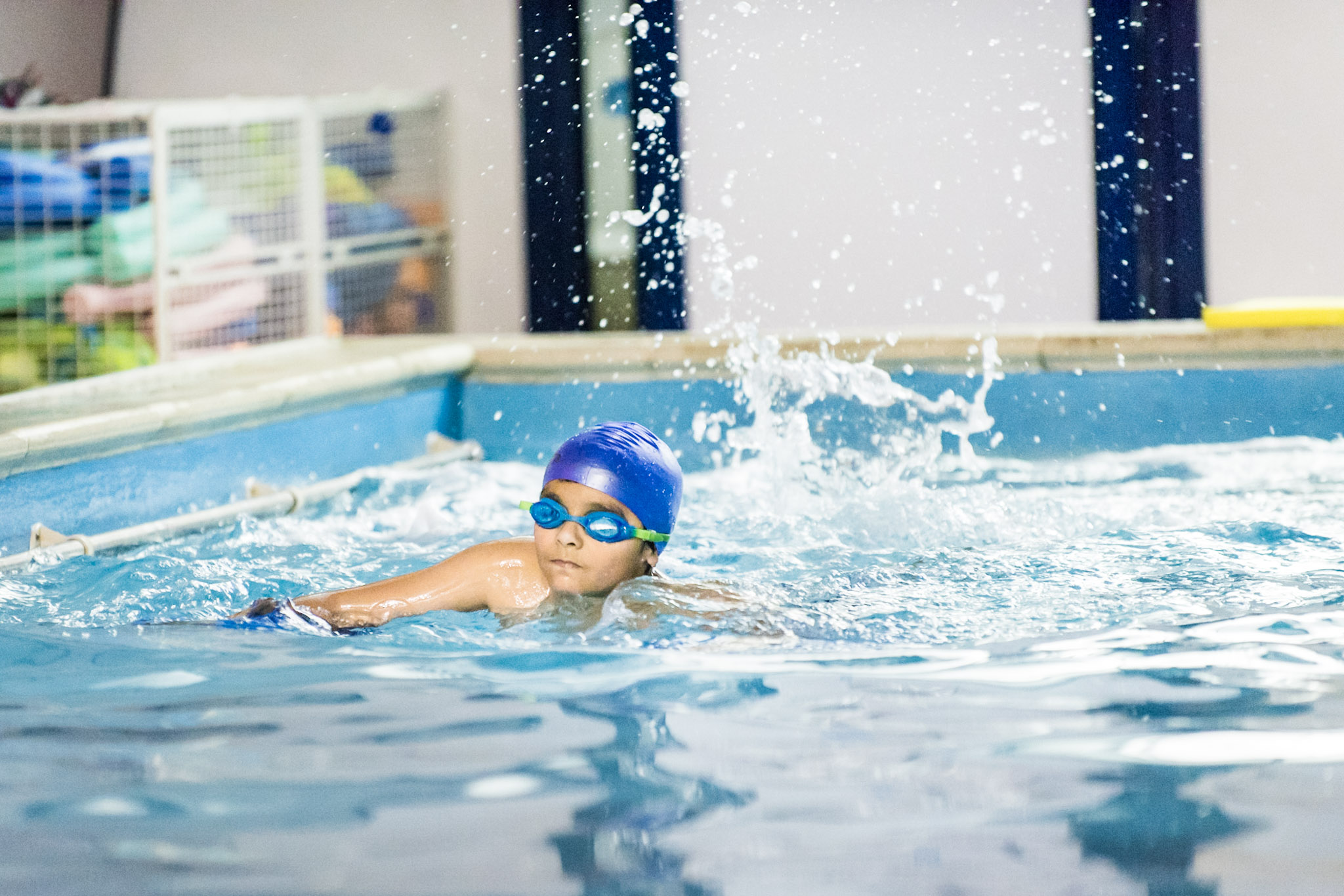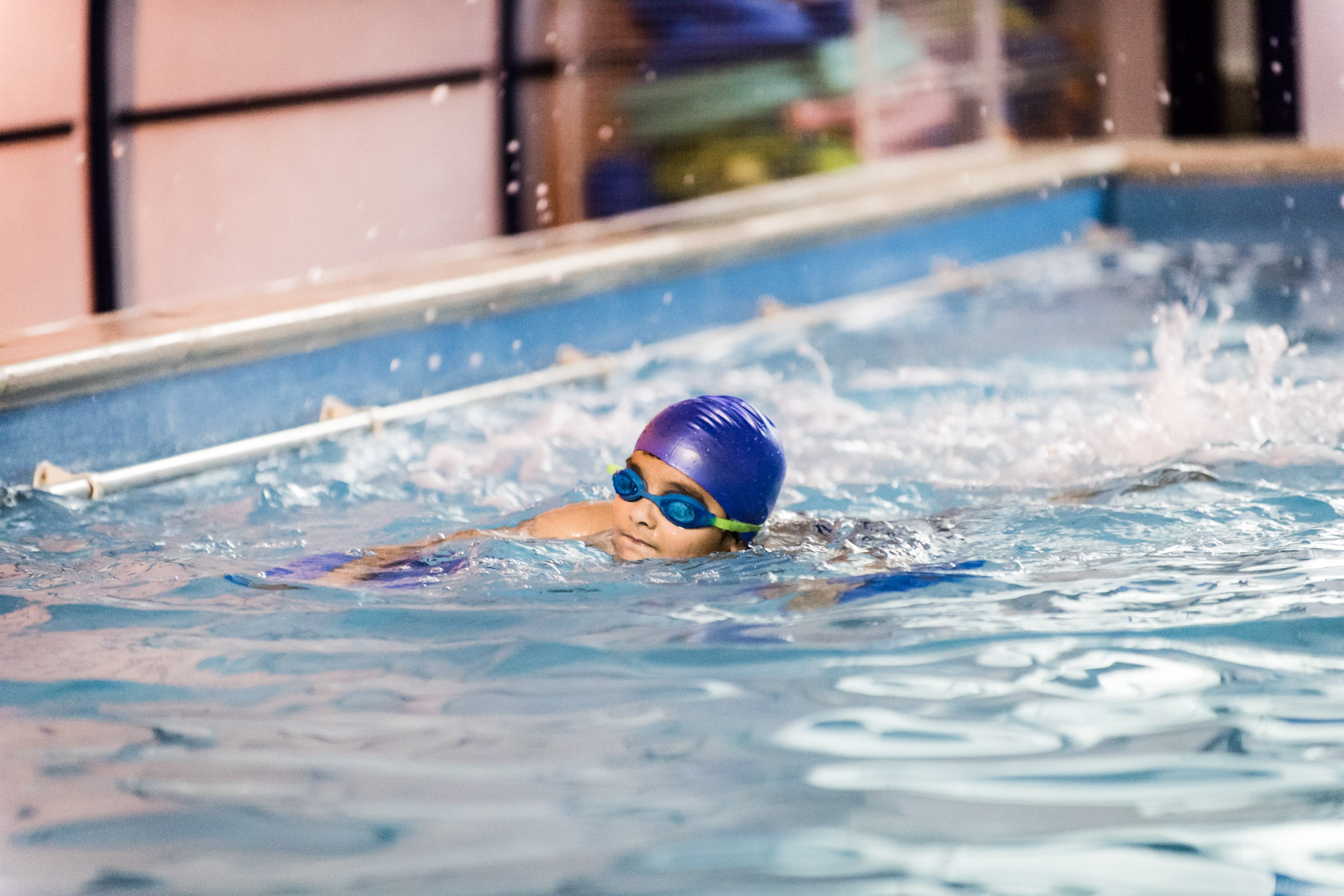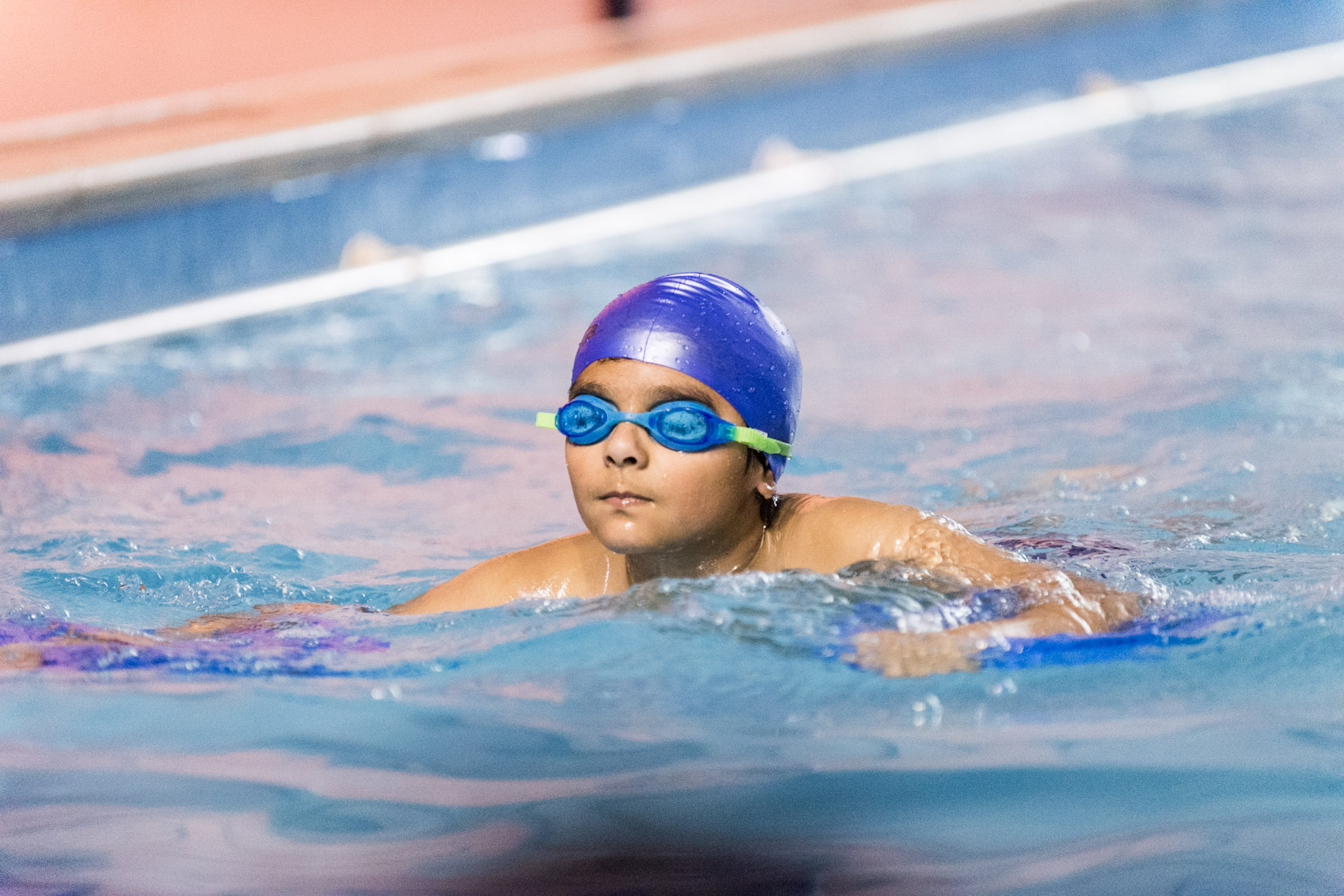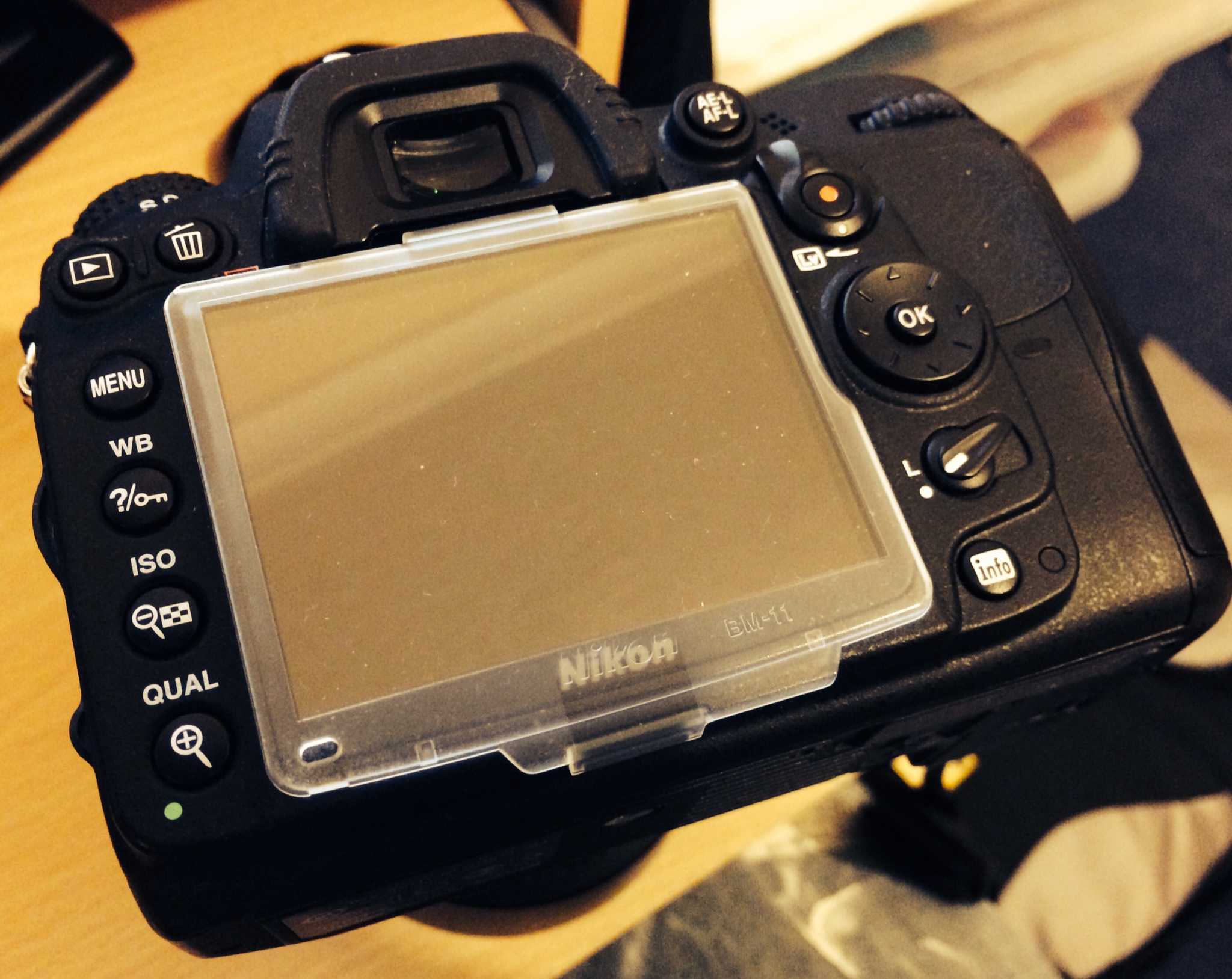What do you do when you're in a dark room and have to take photos of a moving subject? My subject, aka Child 1, has just started swimming lessons and I wanted to get some photos of him as he learns. His lessons are at C of E Junior School in Horsell, Surrey, which has a heated indoor pool. During the winter months, it's not particularly bright inside and ideally I would love to use flash. However, this would have meant that I needed someone walking alongside the pool carrying a flash. Not really an option because: 1) I didn't have another person and; 2) I really think the staff would have had something to say about us walking around water with electronic equipment! So, as with so many aspects of photography, I had to compromise.
My subject was moving and so I needed a fast shutter speed to freeze the action. I was shooting with my 70-200mm at f2.8. I had a 50mm at f1.4 and if I shot at f1.4, that would have given me 4x the amount of light but 50mm wasn't going to give me the zoom I needed. So, I used the longer lens and just increased my ISO. Increasing the ISO increases the sensitivity of the camera's sensor to the available light.
A lot of people get confused by ISO but try this as an example. You're outside during a sunny day and to walk inside into a dark room. At first your eyes can't see anything but after a while and they adjust. The amount of light in the room is unchanged but your eyes become more sensitive to the available light and you can suddenly see more. This is exactly what ISO does. By increasing the ISO, you increase the sensitivity of the sensor to the available light. Unfortunately, it's not all good news. Increasing the ISO increases the amount of noise/grain in the photo. At high ISOs, photos can become so 'noisy' that they are hardly worth taking. But.... everyone must agree that a noisy photo is better than no photo.
FYI: most cameras have a base/native ISO of around 100-200. At this setting, they produce the cleanest, most noise free photo. A few years ago, using an ISO setting of 800 wasn't a great idea due to the noise. Fortunately, technology has improved a lot recently and these days, shooting at ISO in the 1000s isn't a big deal. Here are my photos of Aaryan learning to swim:



These are all taken with an ISO of 3200 and I increased the exposure some more whilst editing. There are many people, often on forums, that go on about how they never shoot at high ISOs etc. Good for them. I prefer getting a photo and preserving memories than worrying about a bit of noise in a photo.
So, next time you're in a dark environment with no flash, go ahead and raise your ISO.
PS - Aaryan is learning to swim at AquaSplash Woking. So if you live near the Woking area and are looking for lessons for your child, I highly recommend them. Paul and the team there are fantastic with children. Child 2, who turns 4 in a few weeks is due to start there from January. Their website is https://www.aquasplashwoking.co.uk/.


